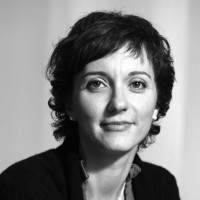TEDxDelft 2015 Speaker | Elisa Giaccardi | A day in the life of a kettle

It’s a bizarre idea but maybe one day, objects will be able to design objects. That’s the sincere belief of Elisa Giaccardi, Professor of Interactive Media Design at TU Delft’s Department of Industrial Design.
Currently, design and manufacturing processes are centred around factors such as cost-effectiveness and optimal design – so is that wrong? “No,” says Giaccardi, “it’s just that these days, there are more opportunities to design products that are more radically innovative.”
One such opportunity involves getting everyday objects to speak for themselves, as it were. “Everyday we use and misuse things for other purposes so that your boot becomes a doorstop or your cup becomes a prop to keep the window open,” explains Giaccardi. “So we thought, what if we could listen to things? Involve objects in the design process? Then we could really innovate because we would be able to look at things that usually go unnoticed because we don’t have the eyes to see them.”
The idea then came to wire up mundane objects such as printers or kettles, by attaching sensors or cameras. In this way you can learn much more about how these objects are used; information that would otherwise go unnoticed. “Imagining a day in the life of the kettle,” suggests Giaccardi, “offers a new perspective, which can contribute to the design process; information that’s invisible to the human eye.”
Working closely with Giaccardi on this project is the ‘Thing Tank’, a team of designers, computer scientists and anthropologists. The ‘Thing Tank’ is described as ‘an interdisciplinary research platform for designing a new generation of products and services capable of reinventing themselves’. Instrumenting and connecting everyday objects around us reveals patterns of use and connections between objects that we would otherwise miss. “The Thing Tank listens to what objects have to say about their use and misuse,” says Giaccardi. “And what these things say could offer new insight into design and manufacture. In this way, things may be able to suggest better versions of themselves”.
So how did Giaccardi get into this field? “For me, there is a theme in all my work: how can we use our new technologies to empower people to develop solutions to their own problems; solutions that are personally meaningful.”
https://www.youtube.com/watch?v=zdtf7KlLrRI&feature=youtu.be
